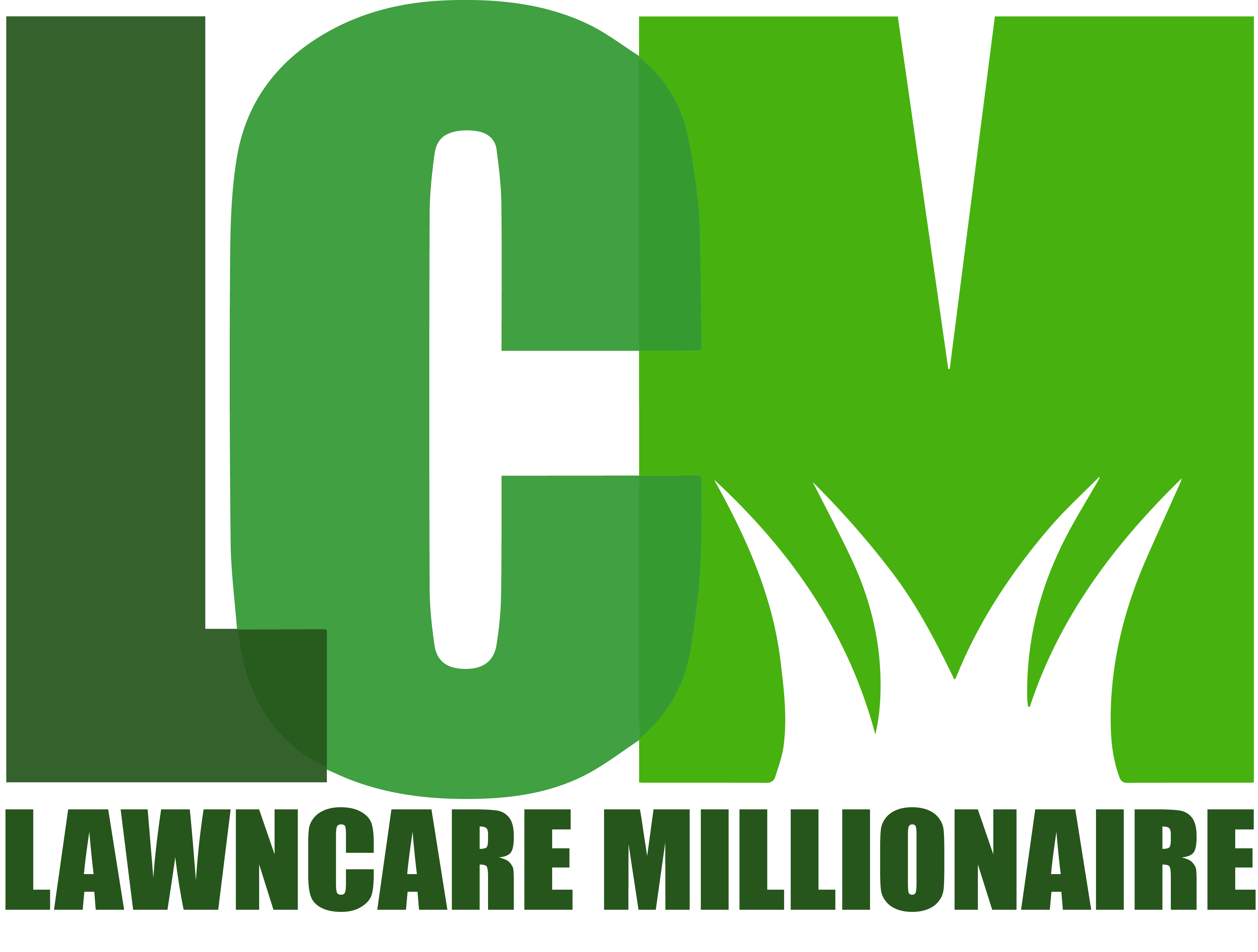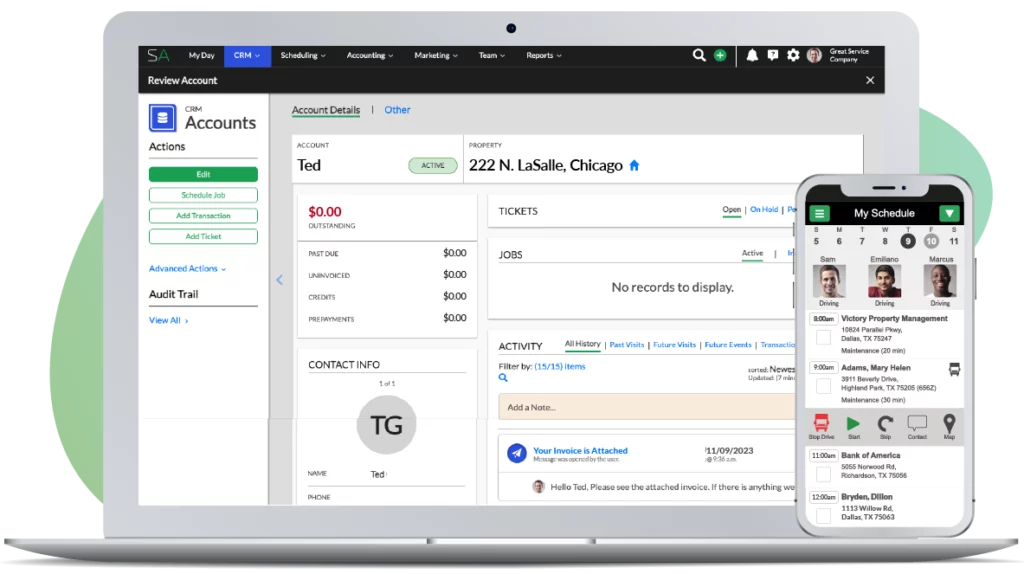Direct Mail is a key component to maximizing profits. Watch this video for Direct Mail Advice.
Tom: I’m going to speak to direct mail for a couple of minutes because it really does have a place in your marketing plan. I think when we talk about the most successful, or the source that will drive the most sales, direct mail can do that for you. But, you have to be careful with it because it can get very expensive and you’re kind of taking a risk when doing it.
It wasn’t that long ago that many lawn care service companies, and I’m talking mainly fertilization and some of the bigger companies, such as Truegreen and Scotts, their main source of sales came from direct mail. When managers switched away from telemarketing to direct mail, they pumped millions and millions of dollars into direct mail. It’s not always the most cost efficient means to make sales, but there’s absolutely a place for it.
Let me throw a couple of things out there and see what you guys think. With direct mail, you can typically expect a less than 1% response rate. I remember one year at Lawn Dawg, we sent out 500,000 direct mail pieces and we got a spring northeastern. We got a snowstorm that wasn’t forecasted. It literally was devastating. It was a lot of money to put into direct mail. That’s what I’m talking about in regards to the risk, but you should only expect about a 1% return from it.
What you are doing is generating estimates. You should be able to close those estimates at a pretty high rate, and I think at this particular plan, you’ve got them in at 62%. If we were going to generate 200 direct mail leads, we’re going to expect 124 sales from that. That’s a fairly high percentage, but it’s going to cost a few bucks to do that.
Jonathan, have you had any experience with direct mail? What are your feelings on that in today’s day and age?
Jonathan: I think there’s a move away from direct mail because the web can be so incredibly successful for so many companies and it’s perceived to be nearly free, although it’s not really. I see direct mail as an awesome opportunity. I still love direct mail, but you nailed it. There are guys who don’t even get a 1% return.
Quick example, you’ve got to be very aware of your market. If you’re mailing to a residential street where two out of every 10 people in that street are even a potential buyer of the service you’re selling, you’re mailing out an awful lot of marketing pieces that have zero chance of getting a return.
The very first question to direct mail is, “Am I targeting exactly the right areas with the highest propensity to buy? Does this area have the highest potential?” If you don’t, your returns could be 1/4 of 1%. They could be a disaster.
You nailed it on the snow. I mean if it’s raining on the day the direct mail gets delivered or it’s overcast, it kills returns. There are all of these variables in direct mail that will just kill you. You can mail the same piece to the same area and get a 2% return. If you mail it again three weeks later and you get 1/8 of 1% return and why, it’s hard to explain sometimes.
That doesn’t mean you don’t do it. I think the guys that do it are going to win in the long term. Tom, here’s how I look at direct mail. I think the web is it. I spend a lot of money on the web, and a lot of guys are shocked when they come to find out what it takes to get good SEO rankings. It really does cost a lot of money, but it’s the best money you could spend.
But, the best way to grow your company from a profit standpoint is with direct mail, and here’s why. My strategy and my belief is, you spent a whole lot of money to get yourself out there on the web so that people are coming to you. I’m going to use a residential example again. If you find that you sell a house on one street, and then you land on another street a few miles away, and then you land on another street a few miles away from that, if you only rely on the web, you have a business that’s scattered across your service market.
All the money’s in density. Direct mail is how you get dense. You can’t get dense just using the web. The web drives where you land. Then, when you land on that street, you go in to own that street and you own it through direct mail. That’s why I’m a huge believer in direct mail. You send out direct mail only to the streets that you land on that have a high potential for gaining more clients. Know your market.
That’s my belief and that’s why I so believe in direct mail. Yes, it is expensive. It is a more expensive sale, but it’s the best sale because it leads to the most profit because you build density.
Tom: Yeah, and you know what? You’re nailing it. Density is absolutely the most important part of profitability, and when it comes to lawn mowing especially, if you can park that truck and do six lawns, that’s as good as having a 50,000 square foot property. Plus, it’s going to be much more profitable. One of our branches in Portland at LawnDawg years ago, had 750 customers in just one zip code. The guy would literally just go and park his truck and treat like 15 lawns at a time. They were tiny little 3,000 square foot lawns, but he did 40 lawns before 1:00 in the afternoon. It was by far the most profitable route.
People are asking questions about the United States Postal Service and wondering if they ever do a direct mail option. They really do reduce the cost of it, but I’m not a huge fan because it doesn’t allow you to target the way a good list does. I think the importance of having a good list far outweighs the cost. I think instead of just blanketing certain carrier routes, you really need to drill down where you want to make the sales and where you want to mail those pieces. That’s how you build density and how you improve your profitability.
Jonathan: Yeah, can I make a quick comment there, Tom?
Tom: Yeah, go for it.
Jonathan: You brought up something that I think is worth an extra minute on, because it is the difference maker in a profitable marketing strategy. I’m going to give an exaggerated example, but if you use this mindset in thinking about marketing and especially direct mail, it will help. Let’s again use residential example. You’re out and you’re doing estimates and you’re meeting with clients. Again, this is a very exaggerated example. You have all these clients and you go out there and you meet with them, and you walk away from the property and think, “I like that guy. Every time I meet with him, he’s a great guy. He’s a great customer.” You just keep having these little experiences.
One day you notice, and again this is a silly example, but one day you notice, that client you liked lives in about a $400,000 house and he’s got a BMW in the garage. Then a week later, you notice that another good customer also has a $400,ooo house and he drives a BMW. What you start to do is you start seeing trends. You notice that the good clients tend to be entrepreneurs, doctors, chiropractors, some kind of professional, who tend to live in about a $400,000 house. Maybe you notice that they drive a BMW, so you go to your mailing list company and you buy a list of everybody in your city that lives in a house between $350,000 and $450,000 that has a BMW and so on and so forth.
Now, that’s a little more expensive list to buy. It’s not free, but now you’re mailing to a group of people that the entire demographic probably has close to 100% chance of being your buyer, instead of mailing to a street where two or three out of every 10 people might be your buyer. What you’ve done is you’ve shifted some of your expense. If you’re spending 28 cents a piece to get bulk mail and post cards out the door, now you spend several pennies per name to buy the list, but you’ve immediately eliminated thousands of pieces that you would have sent that were a complete waste because you weren’t mailing to a specific list.
Exaggerated example, but that’s the mindset in direct mail. How can you narrow the market you’re focusing on and only get mail to the people that are your most likely buyers?
Tom: It’s almost as if you and I conspired about what to talk about during this!
Jonathan: We didn’t.
Tom: We’re doing this on the fly, but what’s happening is, we hit on specific things that literally make the biggest difference to implementing a marketing plan. Let’s stay on this for a minute because I think we need to actually take that exaggerated example that you gave of the BMW, but bring it down to a realistic point of view. In my opinion, a list is huge. Yes, it is more inexpensive to do that than if you do a direct mail. You can blanket as much as you want. Bulk mail is an option, but I’ve always been a firm believer in that if you can identify who your best prospects are, you’re going to increase your closing percentage drastically, or even your response.
If you’re getting a 3/4 of 1% direct mail response, by increasing the validity or the quality of your list, you can get 1% or even higher than 1% response. When you’re talking about the numbers in dealing with direct mail, that’s a make or break 1/4 of 1%. I think that the BMW again is perfect, but when you get right down to it, you want to deal with a couple of parameters in regards to your list. You want to only deal with single-family dwelling units. If we’re talking about residential here, you want to clean out the condos, you want to clean out the apartments. You want to get rid of the renters. You want to deal with single-family dwelling units only and you want to use two things as your main cutoff with who you want to mail something to. It has to be home value and income level.
Most of these companies can actually take it beyond that, and you’re absolutely right, man. You can get lists based on specific interests, whether the people like to play golf, what kind of car they drive, whether they have a vacation home, kids, everything. In our case, if you’re trying to sell organic lawn care, whether or not somebody has children is a big deal, right? If you can specify that in your list, it’s very important, but I think it’s different in different parts of the country. But, you want home value and income level to be the two main things. I don’t know if you want to speak to that at all, Jonathan, but I think it’s important that we let you guys know that the list is a big deal.
Jonathan: Yeah, I’m going to second that with one little comment. It’s not that expensive a list to buy. The common list is the one with the home value, the age, a few demographic pieces of information. For example, the age of the person. That’s a very common list to be able to get a hold of, so it’s not a lot. It’s not very expensive. When you go and add my exaggerated example of the BMW to it, that gets more expensive because now, you’re matching up multiple lists, so it ups the price. Tom, the list you’re talking about, it’s a very affordable, doable list and I’d add one little thing that I just learned over the years. Part of building your company is about building your company with clients you like, and clients that you like doing business with that pay you on time.
You don’t want to build your business around a company you hate because you’re dealing with a bunch of people that drive you crazy. And, years ago, I spent $200 on this huge wall map of my market. This was back when I was still working the phones at CitiTurf in the early days. I hung this thing up on my wall and every time I got off the phone, I put a push pin in the wall for a lead and I put a different push pin in the wall for a sale. The thing that happened was I realized that in my market, there was this one section in my entire market that was about a 1/2 mile by 1 mile and that’s where all our best customers were. They would buy anything we wanted to sell. They weren’t million dollar homes. They were $275,000 to $450,000. Just that little activity clued us in where we wanted to be, and then we bought, Tom, a list exactly like what you just described.
We used that and we bought that list in that area. So, add to what you just said, what kind of homes, how old they are, and now the next question is in what area? Now you can get even more refined in just the zip code. That’s how we’ve done exactly what you described many, many times. It’s a very successful, very affordable approach.



